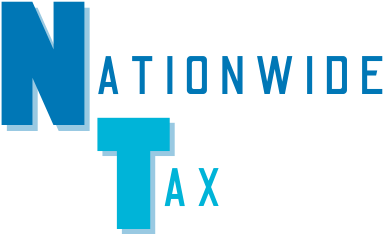Introduction
Doing your own taxes can seem like a daunting task. With all the forms to fill out, calculations to make, and tax laws to navigate, it’s no wonder that many people find the process overwhelming. However, with the right knowledge and tools, doing your own taxes can be a manageable and rewarding experience.
Table of Contents
- Understanding the Basics
- Gathering the Necessary Documents
- Choosing the Right Tax Software
- Following Step-by-Step Instructions
- Utilizing Deductions and Credits
- FAQs
- Conclusion
Understanding the Basics
Before diving into the process of doing your own taxes, it’s important to have a basic understanding of how taxes work. Taxes are a way for the government to collect funds that are used to provide public services and maintain infrastructure. Individuals and businesses are required to report their income and pay taxes based on their earnings.
There are different types of taxes, such as income tax, property tax, and sales tax. For individuals, income tax is the most common type of tax they need to file. Income tax is calculated based on your income, deductions, and credits.
Key Takeaways:
- Taxes are a way for the government to collect funds for public services.
- Income tax is the most common type of tax individuals need to file.
- Income tax is calculated based on income, deductions, and credits.
Gathering the Necessary Documents
Before you can start preparing your taxes, you’ll need to gather all the necessary documents. This includes your W-2 forms, 1099 forms, and any other documents that show your income and expenses for the year.
It’s also important to keep track of any receipts or records that can help you claim deductions and credits. This could include receipts for medical expenses, charitable donations, and business expenses.
Key Takeaways:
- Gather your W-2 forms, 1099 forms, and other income-related documents.
- Keep track of receipts and records for deductions and credits.
Choosing the Right Tax Software
One of the easiest ways to do your own taxes is by using tax software. There are many different tax software options available, each with its own features and pricing. When choosing tax software, consider factors such as ease of use, customer support, and the ability to handle your specific tax situation.
Popular tax software options include TurboTax, H&R Block, and TaxAct. These software programs guide you through the tax preparation process, ask you relevant questions, and help you fill out the necessary forms.
Key Takeaways:
- Consider factors such as ease of use and customer support when choosing tax software.
- Popular tax software options include TurboTax, H&R Block, and TaxAct.
Following Step-by-Step Instructions
Once you have your tax software and all your documents, it’s time to start preparing your taxes. Most tax software programs provide step-by-step instructions to guide you through the process. These instructions will ask you questions about your income, deductions, and credits, and help you fill out the necessary forms.
It’s important to read each question carefully and provide accurate information. Mistakes or omissions can lead to errors on your tax return or even trigger an audit. Take your time and double-check your entries before submitting your return.
Key Takeaways:
- Follow the step-by-step instructions provided by your tax software.
- Read each question carefully and provide accurate information.
- Double-check your entries before submitting your return.
Utilizing Deductions and Credits
One of the benefits of doing your own taxes is the opportunity to maximize deductions and credits. Deductions are expenses that can be subtracted from your income, reducing your overall tax liability. Credits, on the other hand, are dollar-for-dollar reductions in the amount of tax you owe.
Common deductions include student loan interest, mortgage interest, and medical expenses. Credits can include the child tax credit, earned income credit, and education credits. By taking advantage of these deductions and credits, you can lower your tax bill and potentially receive a larger refund.
Key Takeaways:
- Maximize deductions by tracking and claiming eligible expenses.
- Take advantage of tax credits to reduce your overall tax liability.
FAQs
1. Is it difficult to do your own taxes?
Doing your own taxes can be challenging, especially if you have a complex tax situation. However, with the right tools and resources, it can be manageable. Tax software programs provide step-by-step instructions and guidance to help you navigate the process.
2. Can I claim deductions and credits if I do my own taxes?
Absolutely! When you do your own taxes, you have the opportunity to maximize deductions and credits. By keeping track of eligible expenses and understanding the tax laws, you can lower your tax liability and potentially receive a larger refund.
3. What happens if I make a mistake on my tax return?
If you make a mistake on your tax return, the IRS may send you a notice requesting additional information or clarification. In some cases, a mistake could result in a higher tax bill or penalties. It’s important to double-check your entries and review your tax return before submitting it.
Conclusion
Doing your own taxes doesn’t have to be hard. With the right knowledge, tools, and attention to detail, you can successfully navigate the tax preparation process. By understanding the basics, gathering the necessary documents, choosing the right tax software, following step-by-step instructions, and utilizing deductions and credits, you can confidently tackle your own taxes.
Remember, if you’re unsure about any aspect of your taxes, it’s always a good idea to consult with a tax professional. They can provide expert advice and ensure that you’re taking advantage of all available deductions and credits.
